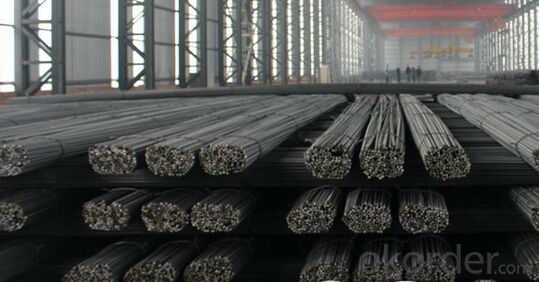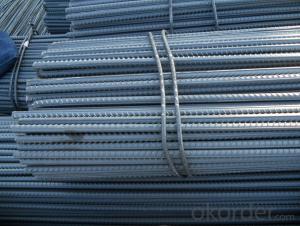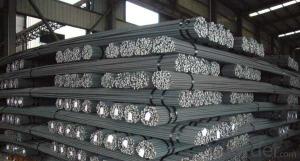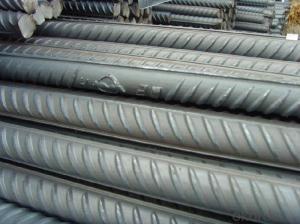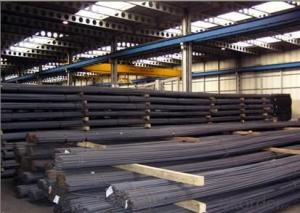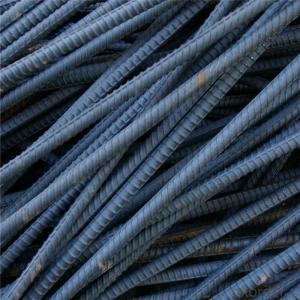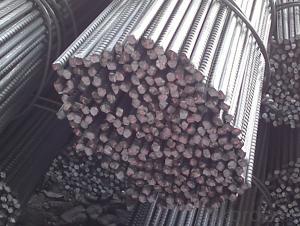ASTM A615 Grade60 Mild Deformed Steel Rebar
- Loading Port:
- Tianjin
- Payment Terms:
- TT OR LC
- Min Order Qty:
- 100 m.t.
- Supply Capability:
- 10000 m.t./month
OKorder Service Pledge
Quality Product, Order Online Tracking, Timely Delivery
OKorder Financial Service
Credit Rating, Credit Services, Credit Purchasing
You Might Also Like
Specification
Standard:
AISI,ASTM,JIS,GB,BS,DIN,API,EN
Technique:
Hot Rolled,Cold Rolled,Cold Drawn,ERW,Forged,Saw,Extruded,EFW,Spring
Shape:
U Channel,Square,C Channel,Hexagonal,Round,Rectangular,Oval,LTZ
Surface Treatment:
Galvanized,Coated,Copper Coated,Color Coated,Oiled,Dry,Chromed Passivation,Polished,Bright,Black,PVDF Coated
Steel Grade:
Q195,Q215,Q235,Q215B,Q235B,RHB335,HRB400,200 Series,300 Series,400 Series,600 Series,SS400-SS490,10#,20#,A53(A,B)
Certification:
ISO,SGS,BV,IBR,RoHS,CE,API,BSI,UL
Thickness:
6-34mm
Width:
6-34mm
Length:
12m
Outer Diameter:
6-34mm
Net Weight:
10kg
Packaging:
seaworthy packaging
ASTM A615 Grade60 Mild Deformed Steel Rebar
Details of the ASTM A615 Grade60 Mild Deformed Steel Rebar
| Standard & Grade: | GB1499-98 : HRB335,HRB400,HRB500 |
| BS4449-1997 : GR460,GR500 | |
| CAN/CSA-G30.18-M92 : 400W | |
| ASTM A615 : Gr.40, Gr.60 | |
| Diameter: | 6mm;8mm;10mm;12mm;14mm;16mm;18mm;20mm;22mm;25mm;28mm;30mm;32mm;35mm;40mm |
| Length: | 6m,9m,12m |
| Packing: | Bundle packing |
| Origin: | China |
| Application: | Construction,Road,Machinery processing,Welding fields. |
| Delivery time: | 10-25 days |
| Shipment: | By bulk vessel or Container |
| Documents: | Mill Test Certificate,Commercial Invoice,Packing List,Certificate of Origin |
Company Introduction of the ASTM A615 Grade60 Mild Deformed Steel Rebar
CNBM International Corporation is the most import and export platform of CNBM group(China National Building Material Group Corporation) ,which is a state-owned enterprise, ranked in 270th of Fortune Global 500 in 2015.
With its advantages, CNBM International are mainly concentrate on Cement, Glass, Iron and Steel, Ceramics industries and devotes herself for supplying high quality series of refractories as well as technical consultancies and logistics solution.

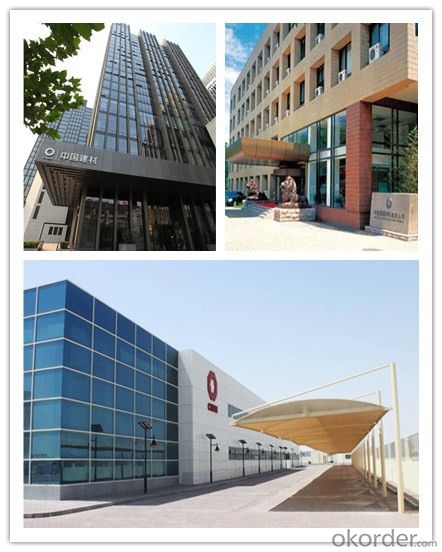
Packaging & Delivery of the ASTM A615 Grade60 Mild Deformed Steel Rebar
| Packaging Detail | Sea worthy packing /as per customer's packing instruction |
| Delivery Detail | 15 ~ 40 days after receiving the deposit |
FAQ
| Are you a trading company or manufacturer? | Manufacturer |
| What’s the MOQ? | 1000m2 |
| What’s your delivery time? | 15-20 days after downpayment received |
| Do you Accept OEM service? | Yes |
| what’s your delivery terms? | FOB/CFR/CIF |
| What's the Payment Terms? | 30% as deposit,70% before shipment by T/T |
| Western Union acceptable for small amount. | |
| L/C acceptable for large amount. | |
| Scrow ,Paybal,Alipay are also ok | |
| Why choose us? | Chose happens because of quality, then price, We can give you both. Additionally, we can also offer professional products inquiry, products knowledge train (for agents), smooth goods delivery, excellent customer solution proposals. |
| What's your available port of Shipment? | Main Port, China |
| What’s your featured services? | Our service formula: good quality+ good price+ good service=customer's trust |
| Where are your Market? | Covering more than 160 countries in the world |
- Q: 14 screw steel 1 meters multiple?
- The performance of classification (class), for example, China's current implementation of standards, (G B1499.2-2007) for steel wire for 1499.1-2008), according to the strength (tensile strength yield point / steel) will be divided into 3 levels; the Japanese industrial standard (JI SG3112), according to the comprehensive performance will be divided into thread steel 5 species; the British Standard (BS4461), also provides some level of performance test of thread steel. In addition, the thread steel can be classified according to the use, such as reinforced concrete, ordinary steel bars and reinforced concrete bars for heat treatment.
- Q: What are the different types of steel rebars used in marine structures?
- The different types of steel rebars used in marine structures include epoxy-coated rebars, stainless steel rebars, and galvanized rebars. Epoxy-coated rebars are coated with epoxy to provide protection against corrosion. Stainless steel rebars are highly resistant to corrosion and are commonly used in environments with high chloride content. Galvanized rebars are coated with a layer of zinc to protect against corrosion and are suitable for marine structures with low to moderate corrosion risks.
- Q: Can steel rebars be used in tunnels or underground mines?
- Yes, steel rebars can be used in tunnels or underground mines. They are commonly used to reinforce the concrete structures in these environments, providing strength and stability to the tunnel or mine structure.
- Q: How do steel rebars affect the overall thermal performance of a structure?
- Steel rebars typically have a minimal effect on the overall thermal performance of a structure. Due to their high thermal conductivity, they can act as thermal bridges, allowing heat to transfer more easily between different parts of the structure. However, the impact of rebars on thermal performance is usually negligible when compared to other factors like insulation materials, window glazing, and overall building design.
- Q: What are the common methods of cutting steel rebars on construction sites?
- The common methods of cutting steel rebars on construction sites include using a circular saw with an abrasive or diamond blade, a cutting torch with oxy-fuel or plasma, a hydraulic shear, or a rebar cutter.
- Q: Are there any limitations or disadvantages of using steel rebars?
- Yes, there are limitations and disadvantages of using steel rebars. Firstly, steel rebars are susceptible to corrosion when exposed to moisture and chemicals, leading to structural degradation over time. This corrosion can weaken the reinforcement and compromise the overall strength and durability of the structure. Additionally, steel rebars have a high thermal expansion coefficient, causing them to expand and contract with temperature variations, potentially leading to cracks in the concrete. Furthermore, steel rebars are heavy and require specialized equipment for handling and installation, increasing construction costs. Lastly, steel rebars are a finite resource, and their production contributes to carbon emissions and environmental degradation.
- Q: What are the different sizes of steel rebars available in the market?
- The market offers a variety of steel rebar sizes to cater to the specific needs and requirements of construction projects. Typically, steel rebars are available in a range of diameters, which commonly span from 6mm to 40mm. The designated sizes are determined by the nominal diameter of the rebar. Among the steel rebars available in the market, the most frequently utilized sizes are 6mm, 8mm, 10mm, 12mm, 16mm, 20mm, 25mm, 32mm, and 40mm. These sizes are extensively employed in various construction applications and can easily be found in most hardware stores. The selection of the rebar size is reliant on the structural design, the required load-bearing capacity, and the specific construction project. Smaller diameter rebars, such as 6mm or 8mm, are commonly employed in light construction projects or instances where a lesser load-bearing capacity is necessary. Conversely, larger diameter rebars, such as 25mm or 32mm, are often used in heavy-duty construction projects or structures that demand higher load-bearing capacity. To determine the appropriate rebar size for a particular project, it is crucial to consult with structural engineers or construction professionals. They can offer guidance based on the design requirements and structural calculations.
- Q: How are steel rebars labeled or marked for identification?
- Steel rebars are typically labeled or marked for identification through various methods such as embossing, stamping, or using colored paint. These labels often include important information like the grade of steel, manufacturer's name or logo, the bar size, and the production date.
- Q: What are the safety precautions to take when working with steel rebars?
- When working with steel rebars, it is crucial to follow various safety precautions to ensure the well-being of yourself and those around you. Here are some safety measures to consider: 1. Personal Protective Equipment (PPE): Always wear appropriate PPE such as safety goggles, gloves, hard hats, and steel-toed boots to protect yourself from potential hazards like falling objects, cuts, and burns. 2. Training and Awareness: Obtain proper training and be aware of the potential risks associated with working with steel rebars. Educate yourself and your team about the correct procedures and safe handling techniques. 3. Secure Storage: Store steel rebars in a designated area to prevent them from falling or causing accidents. Stack them systematically, ensuring stability and avoiding areas with heavy foot traffic. 4. Lifting Techniques: When lifting steel rebars, use proper lifting techniques such as bending your knees and using your legs to lift rather than your back. Avoid overloading yourself and seek assistance when needed. 5. Handling Tools: Use suitable tools like wire mesh gloves or pliers to handle steel rebars. This prevents injuries caused by sharp edges or splinters. 6. Inspection: Regularly inspect steel rebars for any defects, such as rust or sharp edges, before using them. Damaged or defective rebars should be discarded and replaced. 7. Clear Work Area: Keep the work area organized and free from clutter, ensuring that there are no tripping hazards or obstacles that could cause accidents. 8. Communication: Maintain clear communication with your team members, signaling when moving or handling steel rebars. This helps prevent accidental collisions or injuries. 9. Fire Safety: Be mindful of fire hazards when working with steel rebars. Keep flammable materials away from the work area and have fire extinguishers readily accessible. 10. First Aid: Ensure that a first aid kit is available nearby, and be familiar with basic first aid procedures in case of any accidents or injuries. By following these safety precautions, you can significantly reduce the risk of accidents and injuries while working with steel rebars. Remember, safety should always be a top priority in any work environment.
- Q: How do steel rebars contribute to the overall resistance against natural disasters?
- Steel rebars contribute to the overall resistance against natural disasters by reinforcing structures such as buildings, bridges, and dams. They enhance the strength and stability of these structures, making them more resistant to earthquakes, hurricanes, and other natural calamities. Steel rebars increase the structural integrity, prevent collapse, and distribute the force of the disaster, reducing the extent of damage and protecting lives and property.
Send your message to us
ASTM A615 Grade60 Mild Deformed Steel Rebar
- Loading Port:
- Tianjin
- Payment Terms:
- TT OR LC
- Min Order Qty:
- 100 m.t.
- Supply Capability:
- 10000 m.t./month
OKorder Service Pledge
Quality Product, Order Online Tracking, Timely Delivery
OKorder Financial Service
Credit Rating, Credit Services, Credit Purchasing
Similar products
Hot products
Hot Searches
Related keywords







